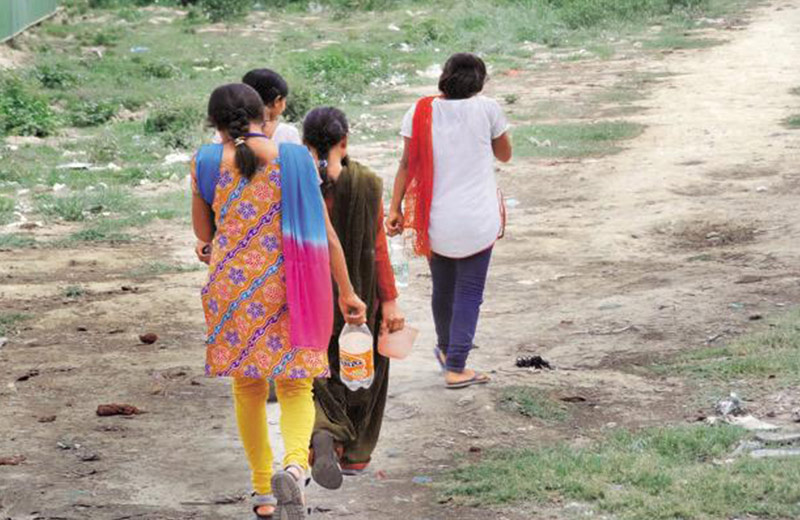In the winter of 1999, when I was a post graduate student of social work in Mumbai, we were taken to a remote village in Banaskantha District, Gujarat. The objective of this visit was to understand the rural way of life, their customs and practices, the formal and informal institutions at work and so on. As young 20 somethings, we all were very excited about the trip but for one aspect. There were no toilets!! We were all told that we would have to use the open fields just like all the other women in the village did. At some point or the other in our growing up years, we would have definitely relieved ourselves in public; either while travelling by bus, or while visiting our native village or sometimes even within the city while going from point A to point B where public conveniences were either absent or open defecation (OD) was better than using these toilets.
However, in our early twenties, defecating in the open seemed quite an uncomfortable task to do especially when you had to choose between early morning or late night. During the course of those ten days, while some of us got adjusted to the open toilets, few others had severe gastrointestinal problems on our return back to Mumbai. Of course there were a fair share of humorous incidents such as the one where after an “evening visit” to the anointed spot, as we were collecting the “lotas” to leave, we suddenly saw a huge black thing move right next to us. To our utter alarm, we realized we had been blissfully unaware of the camel sitting right next to us while we defecated under the star-lit sky!
Our experience with inadequate toilets didn’t quite end in the village. As we waited in Ahmedabad for our train to Mumbai, we were forced to use the toilets in a movie hall which repulsed us to the core. Badly maintained, with no running water, poor electricity and broken doors, it made us want to run back to the open fields in the villages. When I look back at this episode in light of the recent attention to sanitation and OD, I am able to relate to all the reasons people gave for not cultivating the toilet-using habit. Despite having built toilets, poor maintenance, lack of water and hygiene were the main reasons which made several women in the villages to prefer open fields to toilets, risking their safety, privacy and convenience.
So, why is that though there are several schemes and programmes for toilet construction, OD is still a major concern in India? The answer, I believe, lies in the usability of the toilets constructed. By usability, I don’t mean only the cleanliness and maintenance of the facility. Usability comprises of several other factors: availability of the toilet, followed by the distance to the facility, accessibility i.e is there sufficient lighting, are there ramps for the disabled and senior citizens, are the toilet pans appropriate for different age groups such as children? Is there privacy and safety for adolescent girls, and so on. The sanitation infrastructure in India lacks the human life-cycle thinking. The recognition that different people have different sanitation requirements at different stages in their life which affects the way they use toilets is neglected in toilet design and construction. Although a handful of organisations working at the grassroots have incorporated some aspects of this life-cycle thinking by making smaller pans for children, open dwarf-walled cubicles where children can see their mothers or defecate under the mothers’ supervision and so on, these modifications in design are exceptions and not the norm.
With rampant construction of toilets under the SBM and attention to behavior change where people are encouraged to use toilets, it might be worthwhile to conduct rapid assessments of the different needs of toilet users in order to reorient the current toilet designs. With several players getting involved in sanitation construction and campaigns targeting behavior change, we need to mainstream studies on usability to bring about a shift in the guidelines on toilet specifications. For our multi-crore schemes to be effective and reach the target audience, it is time to pause and pay attention to the needs of the end user. Achieving universal access to sanitation is a good thing, but let us ensure people can use it too.

Sriharini Narayanan
Senior Specialist, TNUSSP


Leave A Comment
You must be logged in to post a comment.